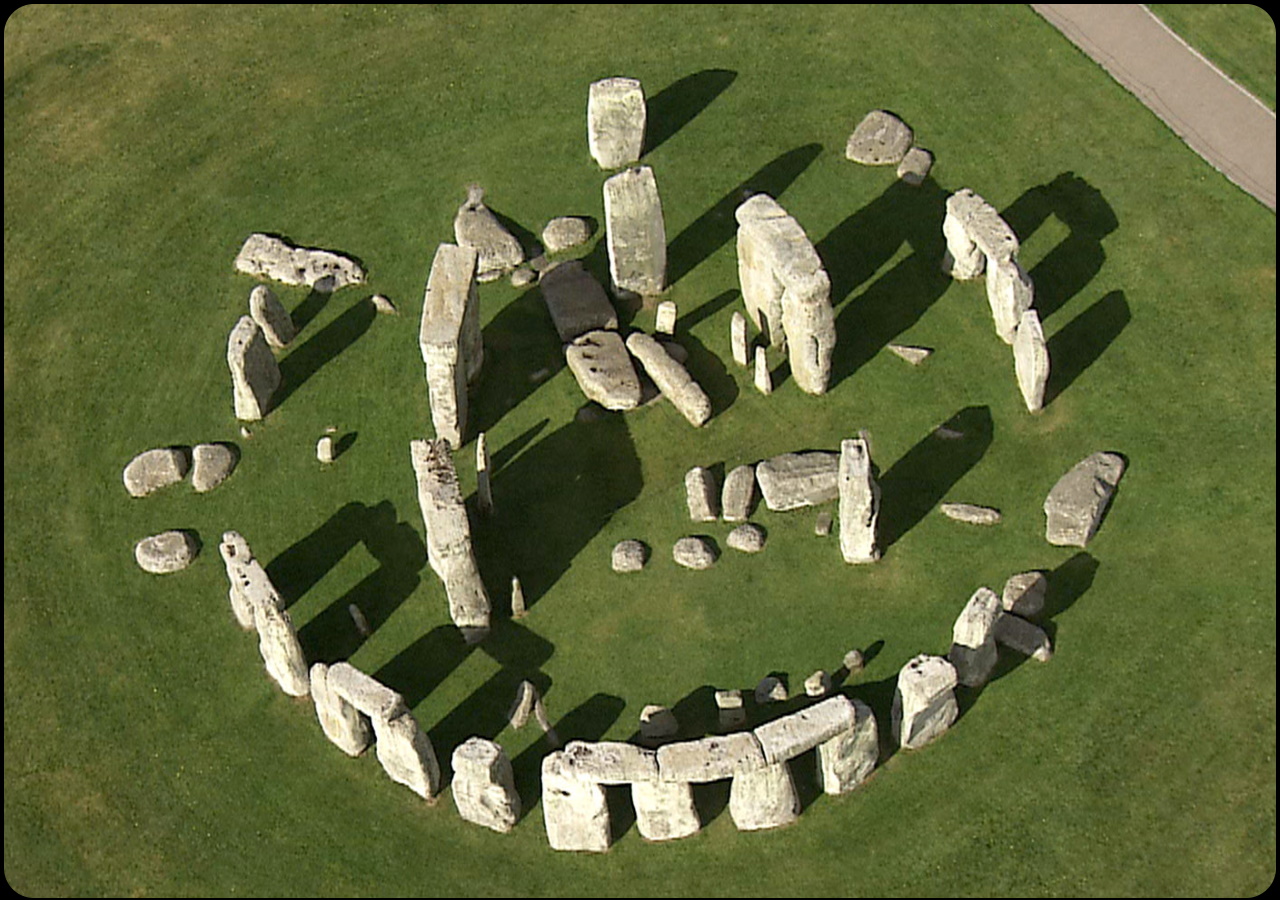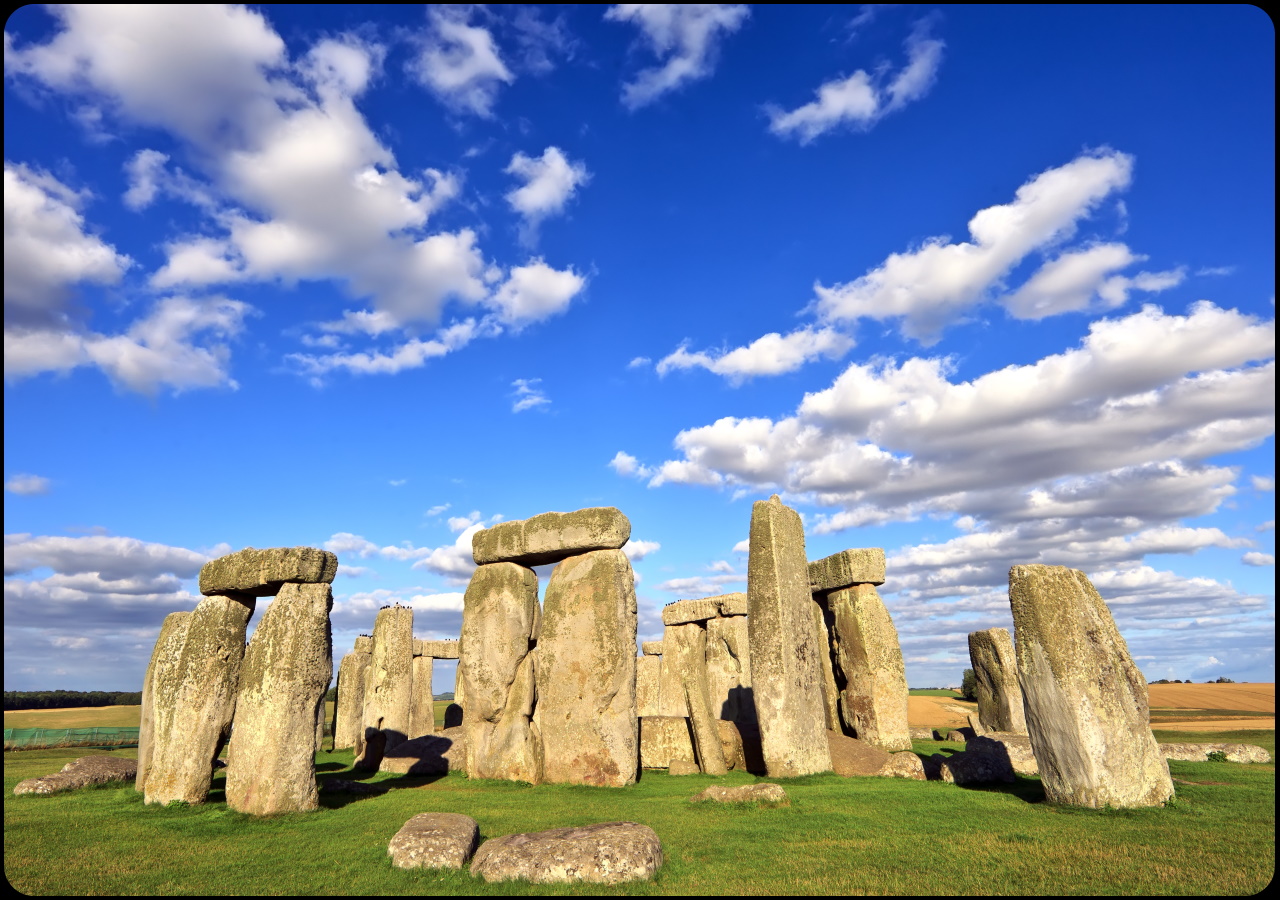
Stonehenge
is a prehistoric monument in Wiltshire, England. It consists of a ring
of standing stones, each around 13 feet high, seven feet wide, and
weighing around 25 tons. The stones are set within earthworks in the
middle of the most dense complex of Neolithic and Bronze Age monuments
in England, including several hundred burial mounds.
Stonehenge
appears to have been associated with burial from the earliest period of
its existence. Deposits containing human bone date from as early as
3000 BC, when the ditch and bank were first dug, and continued for at
least another 500 years. Stonehenge was a place of burial from its
beginning to its zenith in the mid third millennium B.C. The cremation
burial dating to Stonehenge's sarsen stones phase is likely just one of
many from this later period of the monument's use and demonstrates that
it was still very much a domain of the dead.
Archaeologists
believe it was constructed from 3000 BC to 2000 BC. The surrounding
circular earth bank and ditch, which constitute the earliest phase of
the monument, have been dated to about 3100 BC. Radiocarbon dating
suggests that the first bluestones were raised between 2400 and 2200
BC, although they may have been at the site as early as 3000 BC.
Stonehenge
was produced by a culture that left no written records. Many aspects of
Stonehenge, such as how it was built and for what purposes it was used,
remain subject to debate. A number of myths surround the stones. The
site, specifically the great trilithon, the encompassing horseshoe
arrangement of the five central trilithons, the heel stone, and the
embanked avenue, are aligned to the sunset of the winter solstice and
the opposing sunrise of the summer solstice. A natural landform at the
monument's location followed this line, and may have inspired its
construction.
|  |  |  | 
|  |  |  |  |
|